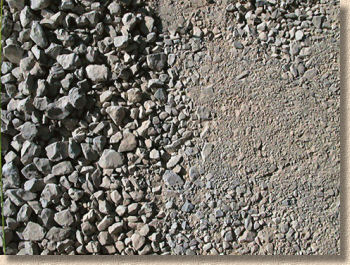Principles
The sub-base layer is often the main load-bearing layer of a pavement. It is designed to evenly spread the load of the paving, and any traffic thereon, to the sub-grade below. A well-constructed sub-base will aid drainage and prevent settlement and channelisation - the phenomenon common on cheap installations of block paving, where two 'ruts' develop in the paving. These 'ruts' are caused when a car travels over the same line of paving to the garage, every morning and every night. Channelisation is also apparent on carriageways, particularly at the approach to traffic lights and on upward gradients. The sub-base is intended to prevent channelisation and settlement.
A sub-base works by distributing a point load over a larger area. The interlock between adjacent particles of the sub-base material ensures that a relatively thin layer of the right sort of crushed aggregate can dramatically improve the ability of the ground to carry comparatively heavy loads.
The load-bearing function and capacity of even a 100mm sub-base should not be underestimated. Just a few centimetres of the right type of material, compacted in the right way, can turn an unreliable, rut-prone sub-grade into a surface capable of carrying cars and other vehicles. This is achieved by “Load Spreading”: the granular material dissipates the point loads over a significantly wider area, and so enables quite considerable loads to be supported without settlement or permanent distortion.
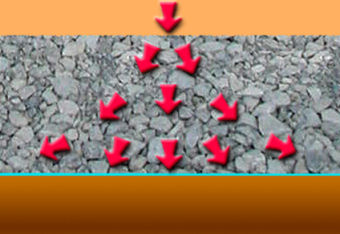
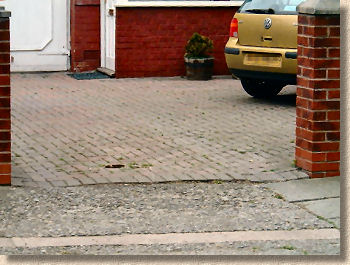
All too often, cut-price residential block-paving installations omit the sub-base as a major cost-saver. Householders are unlikely to be aware of the need for such a layer, and, if out all day when the work is being done, may never notice its absence. A common tale is..... "such-and-such-abody said we didn't need any stone, because the dirt under the old flagstones would be firm enough!" - this tale usually comes out once the paving has sunk, and the original contractor is long gone and strangely difficult to contact.
When discussing the construction of driveways with clients, I liken the sub-base to a carpet underlay...you can spend a fortune on the finest Axminster carpet, but if you don't use an underlay, it's never going to look or feel right. If your contractor tells you that a sub-base isn't required beneath your new drive, then ask how the sub-grade (soil beneath drive) is going to spread the load of the paving and what guarantee is offered with regard to settlement. Alternatively, get a different contractor to give their opinion.
Once a good sub-base has been installed, it can be re-used without any further work, if you decide to change the surfacing/paving of your driveway. Many newer houses have tarmacadam drives with a good sub-base beneath. In such cases, the tarmac can usually be stripped off, the sub-base checked and re-levelled if required, and the new paving can be laid over the old sub-base.
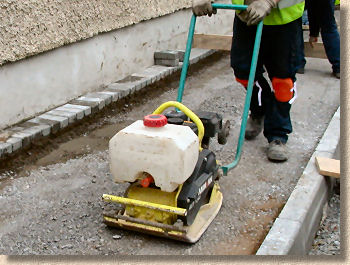
A finished sub-base should not deviate from the correct level by more than 10mm, and should reflect the final profile of the paving. The bedding layer above the sub-base ought to be a constant thickness to avoid differential settlement.
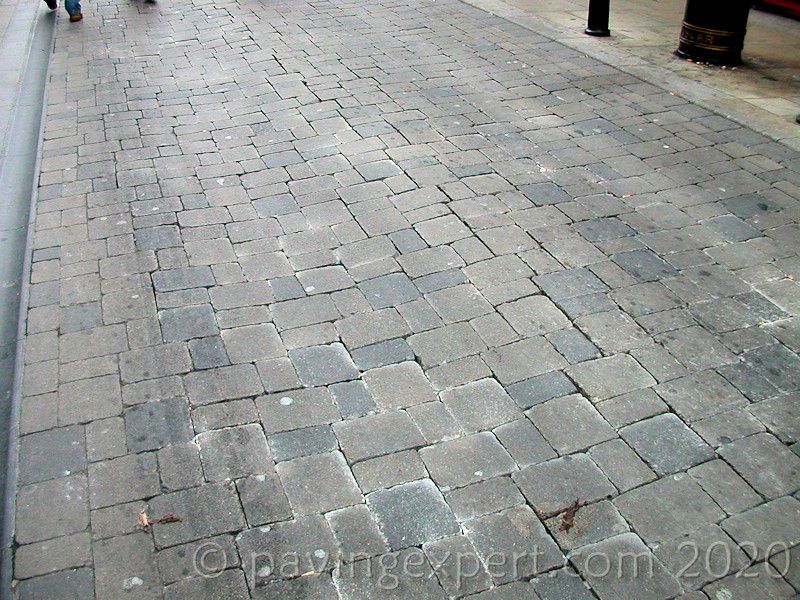

There are a number of separate pages which consider various sub-base FAQs including...
Suitable Materials
See also British Standards Page
The materials used to construct a sub-base are chosen for their inherent load-spreading and drainage capabilities when correctly laid. Two different types of material are considered here...
- Unbound Granular Material
- Cement Bound Material(also known as Hydraulically Bound)
Unbound materials are defined as those aggregates which are loose and do not bond or adhere when laid and compacted, but rely on the natural interlocking of adjacent particles. An unbound sub-base material can be loosened and removed quite easily.
Bound materials are, therefore, those which do bond with their neighbouring particles by means of a "binder". The two most common binders are Bitumen (tar) and Cement. Hence, 'tarmac/bitmac' is actually a Bitumen Bound Material and 'concrete' is a Cement (aka Hydraulically) Bound Material (CBM or HBM). Bound materials 'set' and are consequently more difficult to loosen and remove.
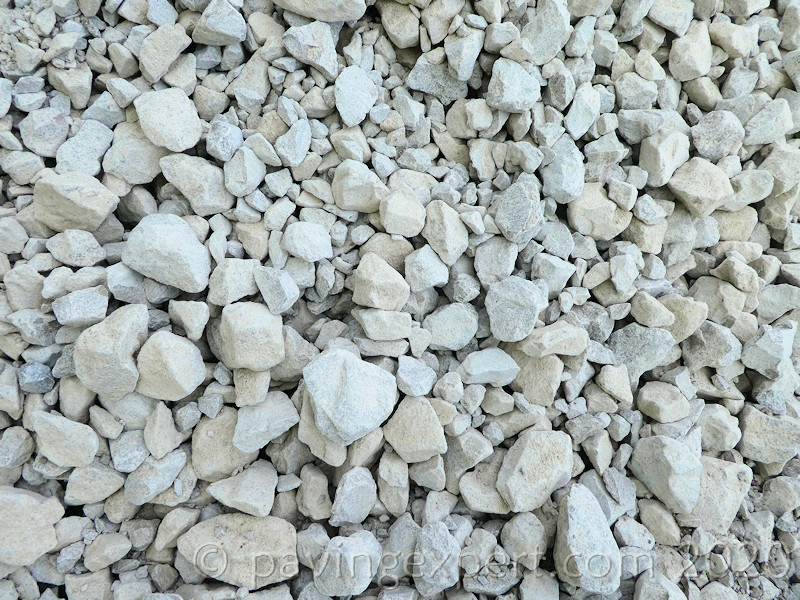
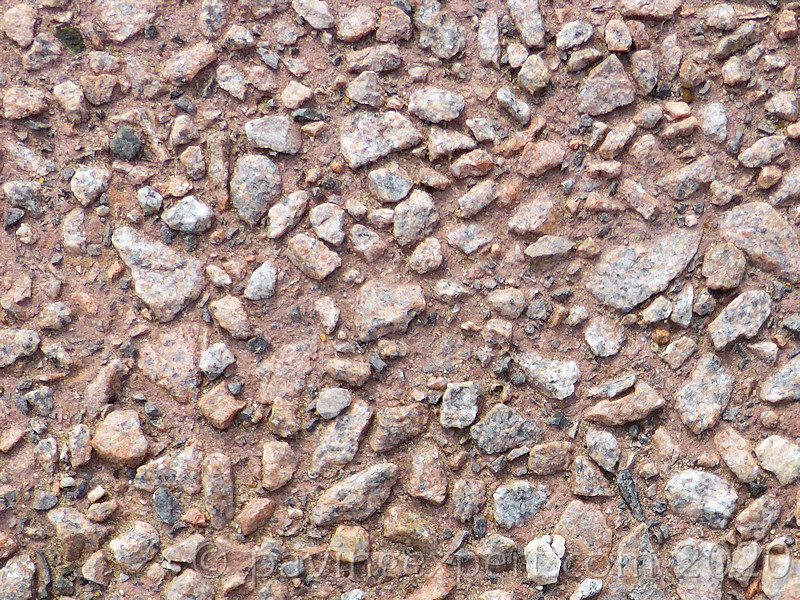
Unbound Materials
DTp Type 1 Granular sub-base
The name refers to Dept. of Transport specifications. The full title is "Type 1 granular sub-base to the Department of Transport Specification for Highway Works" It is still referred to as MOT1 (the old Ministry of Transport) or even the more inaccurate "40mm to dust". In Ireland it is usually known as "804", a name derived from the fact that the full specification is to be found in clause 804 of the National Roads Authority's Specification for Road Works.
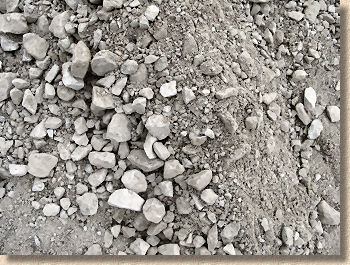
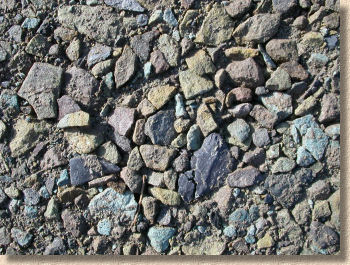
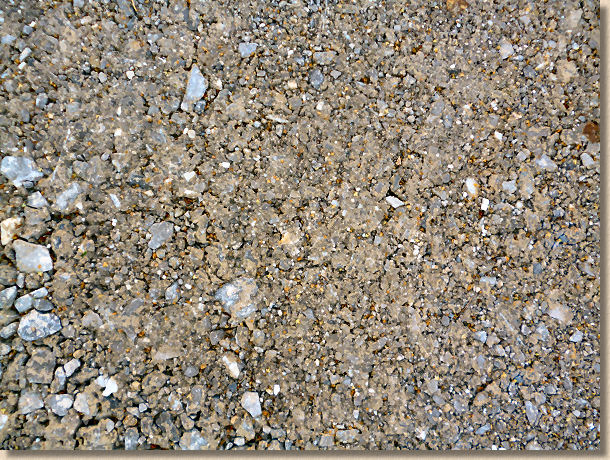
The content previously provided here, looking at the various unbound sub-base aggregates, including DTp1, DTp2, DTp3, DTp4 and their Irish equivalents (803,804, Type C and 807) have been moved to a separate page to enable expanded coverage.
Unbound Aggregates for Sub-Bases
Coverage Calculator
Here's a calculator that calculates the quantity of granular material required to cover a known area at any given thickness.
Compaction Fraction:
A commonly posited question is " What depth of uncompacted sub-base material is required to give a compacted thickness of XX mm? "
It's impossible to state, with any degree of certainty, how much any quantity of sub-base material will compact. Some types of aggregate are more compactable than others, so, for example, for 100mm compacted thickness we may start with 140mm of sandstone but only 120mm of granite.
There is also an issue with the blending of the aggregate. Well-blended Type 1, where the fines and lumps are evenly distributed, will compact differently to a batch that has too few fines or too much fines.
And then there's moisture content: at an ideal moisture level (8-13%) we get maximum compaction but if the material is too wet and, especially when too dry, compaction can be only partial.
These reasons, and more technical ones, are why I can’t give a definitive answer on this website - there isn’t one! It's a matter of relying on experience along with a bit of trial an error to find the right value for any particular aggregate.
However, as avery, very, VERY general rule, we look for compaction of around 30% with most Type 1 aggregates. So, 130mm will probably compact to 100mm; 195mm will most likely compact to 150mm.

How much compaction?
Along with the question regarding how far a loose aggregate will compact, the usual follow-up question asks how many passes over and over, back and forth, up and down, side to side, are required to ensure a given depth of aggregate is compacted as thoroughly as possible, what is referred to as 'Compaction To refusal', the point at which the aggregate simply won't compact any further.
Luckily, the aforementioned SHW gives us Table 8/4, of which the following is an extract looking at just a couple of the more popular types of compaction equipment.
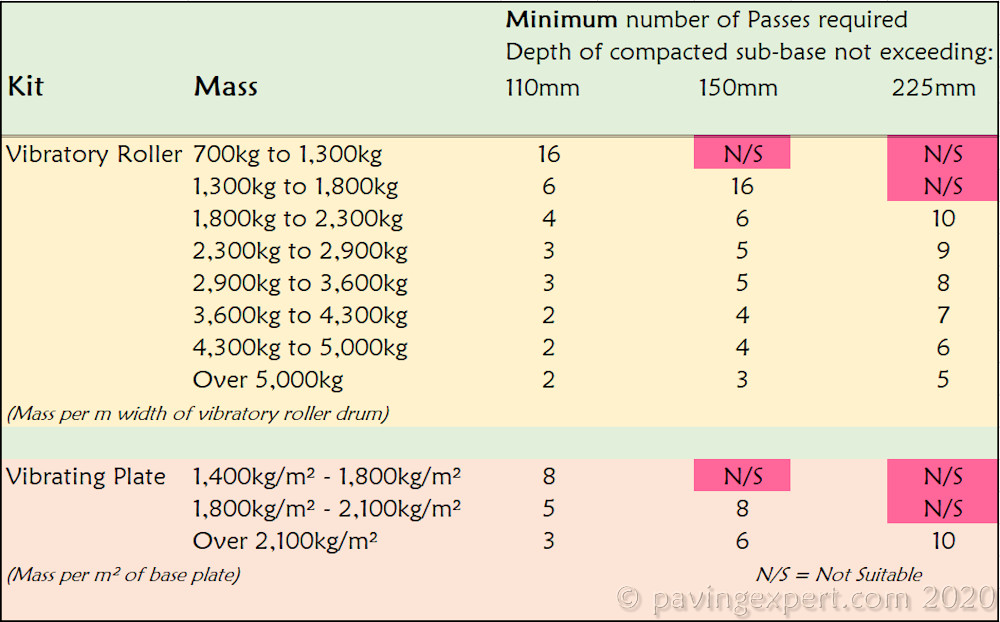
Cement (Hydraulically) Bound Materials
This group refers to those materials that use cement as a binder, ie, a 'glue' to stick together the individual particles.
For years and years it was known as Cement Bound Material or CBM, but then the Illuminati who rule the universe from their ivory tower decided this was far too clear and so the term has recently been amended to Hydraulically Bound Material (HBM), which is pretty meaningless to anyone who is not a concrete technician and therefore ideally suited to the purposes of the bureaucracy.
Actually, HBM is a much wider group than CBM. HBM includes all materials that work by setting hard(ish) when mixed with water (hence the 'hydraulic') and so includes materials prepared using, for example, lime, PFA or pozzolan. By and large, the vast majority of HBM used in Britain and Ireland will be CBM, but there will, of course, be the occasional exception where, say, lime is used as the binder.
Lots more on this truly fascinating subject is available from the HBM Info Website
What happened to CBM?
Back in simpler times, CBM was sub-divided into a small number of fairly easy to understand classes based on their 'strength'. However, by expanding the whole group of materials to include all hydraulic binders, there is now a much larger range of classes or products that qualify, and the industry has moved towards specifying materials for each project rather than use 'off-the-shelf' classes. There is a lot of sense in this approach, but it makes explanation much more complicated, so much so that it is well beyond the remit of this website.
However, as a very simplistic (probably over-simplified) guide to what's what in relation to the key specifying document for the paving trade (namely Specification for Highway Works aka SHW).....
There are three classes of Cement Bound Granular Material, helpfully named CBGM A (clause 821), CBGM B (clause 822) and, you guessed it, CBGM C (clause 823). The difference between the classes is not solely the cement content, as you might imagine, but the aggregate grading. The cement content is selected to suit the application, so may vary from relatively weak to hard-as-bloody-iron, depending on the job in hand.
There then follows a series of materials that use alternative binders. There is Slag Bound Material (SBM) which comes in up to 7 different classes, Fly Ash Bound Material (FABM) and Hydraulic Road Binder Bound Material (HRBBM) both of which seem to be available in 3 different classes.
Mass Concrete
This is a highly simplified version of the HBM methodology described above, and as such it is only normally used in simple applications such as patios and driveways where:-
- heavier-than-normal loads are anticipated
- the paving units are to be directly bedded, such as setts, cobbles or duckstones
- bad ground may be a problem
It is more expensive than either of the above methods. A 'slab' of mass concrete, usually 100mm or 150mm thick is spread and compacted, then allowed to set. A few days later (2-7 days, depending on time of year and weather conditions), the paving is laid on a bedding material over the now solid concrete.
A medium strength concrete is used in most applications. Concrete is best supplied ready-mixed to ensure thorough mixing and a correct ratio of cement to aggregates. Strength C20 is the usual grade, and a 25mm slump is reasonably stiff and not too 'runny' to handle. If the application warrants a concrete sub-base, it would be wise to consult a paving /concrete contractor, or civil engineer for accurate specification. 1m³ concrete covers 10m² at 100mm thick and 6.5 m² at 150mm thick. Concrete is ordered and delivered by volume, not by weight.
Typical Sub-base Designs
Here are examples of four different types of sub-bases.
In most cases, one of the following types should be suitable for most residential projects. In extreme conditions, e.g. very heavy loads expected on paving, or bad ground conditions, a special sub-base may need to specified for your particular situation. More details available by email
Sub-base Light Duty
(light, foot traffic only - paths and patios)
75mm compacted thickness of DTp1 or of 50mm crusher run, compacted with a vibrating plate compactor (Wacker plate) or vibrating roller, if space permits. Both these items are available from local hire centres. A reasonable alternative is to compact the material by dropping a sledge hammer or asphalt punnel directly down onto the material, using the weight of the tool to aid the compaction. A compacted sub-base should not move when you walk upon it.
Sub-base Light-Medium Duty
(light foot and vehicle traffic - domestic drives, paths and patios)
100mm compacted thickness of DTp1 or of 50mm crusher run, compacted with a vibrating plate compactor (Wacker plate) or vibrating roller. As this sub-base is intended to carry the weight of a vehicle, it is essential that compaction is thorough. It is money well-spent to hire a plate compactor or roller to eliminate the chance of future settlement. The finished surface of the sub-base should be 'tight' i.e. not open textured or with surface voids. Fill any such openness with fines or grit sand.
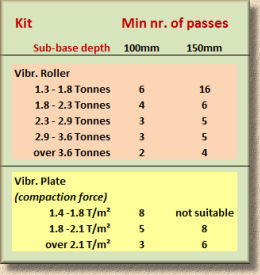
Sub-base Medium Duty
(foot traffic, cars, vans and small pick-up trucks not exceeding 7.5 Tonnes)
This is exactly the same as the Light-Medium Duty sub-base above, except it is 50mm thicker. 150mm of DTp1 is used, and this may be compacted as two 75mm layers or one 150mm layer. Compact thoroughly and make sure the final surface is 'tight' before continuing with the bedding material.
Sub-base Medium-Heavy Duty
(foot traffic, cars, vans and small pick-up trucks etc. not exceeding 20 Tonnes)
Simply a slab of mass concrete i.e. there is no reinforcement in the concrete. If this is your required sub-base, seek professional advice before continuing. Usually 100mm thick or 150mm for heavier users such as tractors or wagons or when covering bad ground. In these cases, reinforcement via polyester fibres or steel mesh is usually added to the slab.
Construction
The sub-base material should be spread out in layers no thicker than 150mm and roughly levelled with spades, rakes or similar.
Where a sub-base needs to be greater than 150mm in depth, it should be built-up as a series of layers, each being 150mm or less and thoroughly compacted before placing, levelling and compacting the next. This is done to ensure there is minimal risk of settlement once the completed pavement is opened to traffic (pedestrian or vehicular). As described above, sub-bases are exceptionally good at spreading or dissipating a load, and it is this feature which makes it almost impossible to properly compact any thickness of granular material more than 150mm deep.
So, for a 250mm sub-base, two layers @ 125mm could be used, or one layer @ 150mm and one @ 100mm. A 425mm sub-base (pretty exceptional!) might be created as two layers @ 150mm and then a top layer at 125mm, as shown opposite.
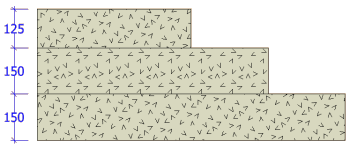

Once the sub-base material has been levelled, it should be compacted by multiple passes with the selected compacting equipment, both longitudinally and transversely if possible, until full compaction is achieved. Changing the direction of travel for the compaction equipment can help ensure a better result, but this is not always possible. For example, on a narrow footpath such as that shown below, it simply isn't feasible to have the roller work transversely (side-to-side) and so longitudinal compaction will have to suffice.
See the table above for guidance on the minimum number of 'passes' required to ensure thorough compaction of each layer of sub-base.
Once compacted, the level of the sub-base layer should be checked. To ensure that any laying course material or other overlying layers will be of uniform thickness (which is essential to avoid variable settlement), the surface of the sub-base when compacted has to be even and accurate to a tolerance of +10mm to –15mm. This is the tolerance stated in the official documents, but it should be noted that some engineers will impose a stricter tolerance: ±10mm is not uncommon. Any part of the sub-base deviating from the required level by ± 10mm should be raked off or topped up with additional material and re-compacted to the correct level.
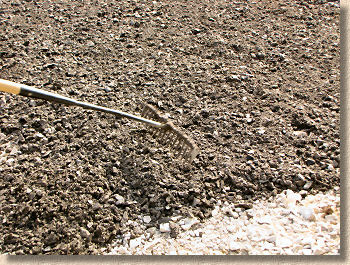
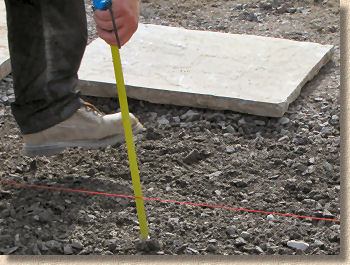
The simplest way to check the level of the compacted sub-base is to use the Dipping Technique, where a string line is stretched tight from one known level point to another, and then a tape measure or marked stick is used to check the distance between the line and the surface.
On larger areas where a string line would be prone to sag which could give false levels, it's often quicker and easier to use boning rods .
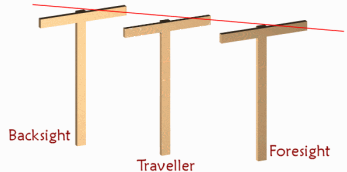

The other key requirement for a well-constructed sub-base is that the surface, once compacted, should be "Tight".
Essentially, this means that the surface should not have too many (or any!) open voids, but should be a reasonably uniform and smooth-ish. This is usually achieved by ensuring there are adequate fines within the sub-base material.
However, because sub-base tends to be delivered in fairly large quantities, it is possible that some parts of a load will have fewer fines and this can result in the compacted sub-base having what is referred to as an "Open" texture. This is potentially problematic, because these voids within the surface could allow granular material in overlying layers (such as laying course material for block paving) to trickle down into the sub-base and so cause settlement in the pavement when it is being trafficked.
The remedy is to ensure that any areas with an open surface texture are filled with fines or coarse sand or some other suitable granular material before continuing with construction of the pavement.
